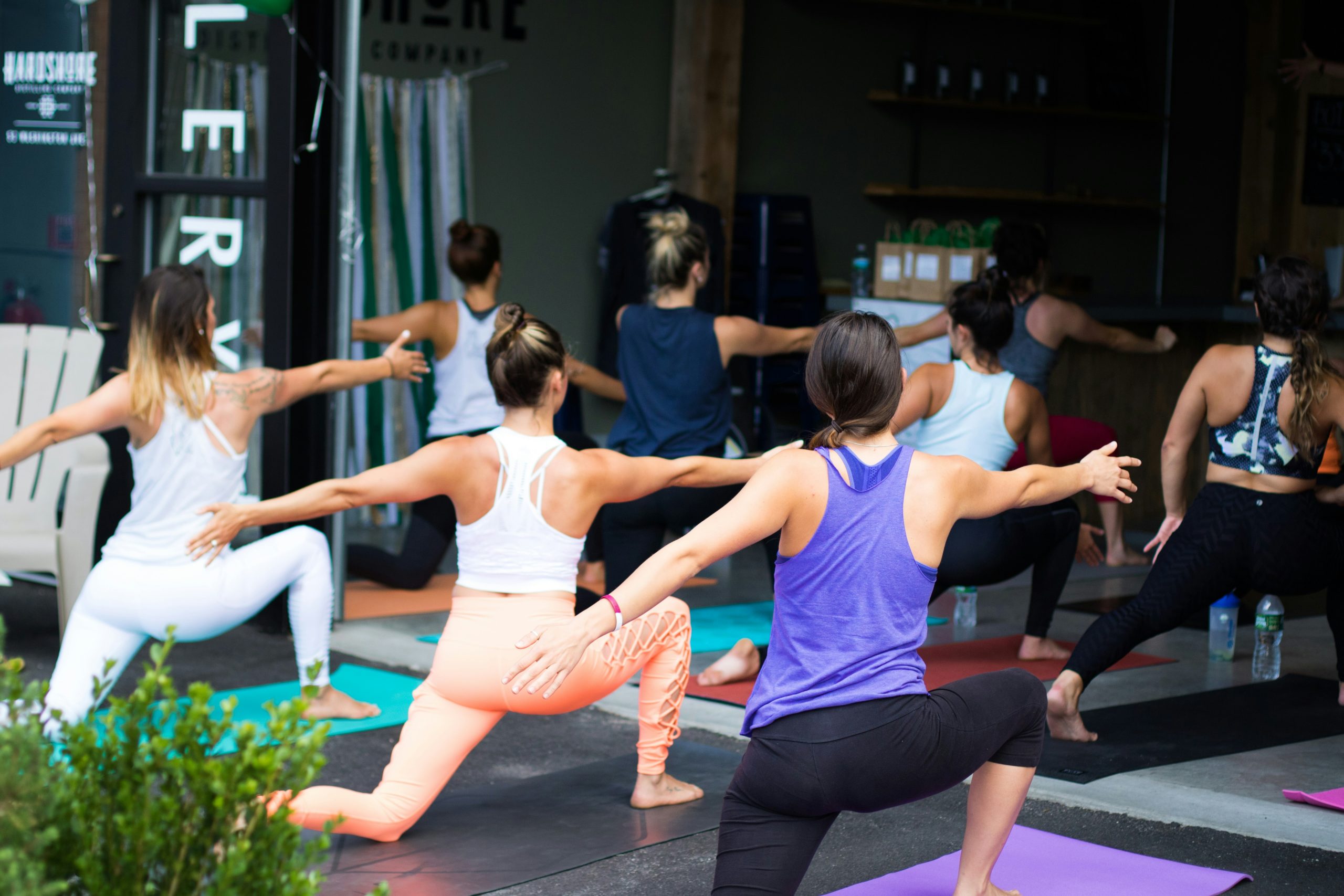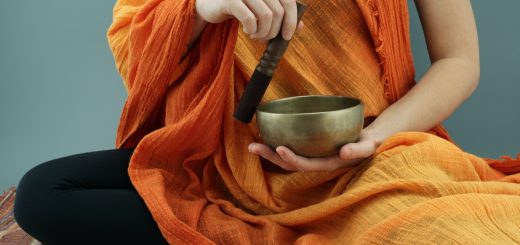Restorative Yoga Poses for Relaxation

Before diving in, please note: This post is for informational purposes only. If you’d like to know more about how we approach topics, feel free to check out our friendly Disclaimer Page.
Hey there, amazing readers! 🖐️ Just a quick note: yes, we know there are a lot of ads here. Trust us, we get it—it’s not the prettiest look, but they help us keep this blog alive and kicking. Those pesky little ads cover the costs of all the behind-the-scenes magic, from hosting and tech stuff to creating content we hope you’ll love.
We’re committed to delivering quality posts, and your support (even just sticking around despite the ads) means everything to us. So, bear with us, and thanks for helping us keep the good vibes rolling. Now, on to the fun stuff! 😉
TRANSLATE BUTTON AT THE END OF THE ARTICLE
A Quick Overview
Restorative yoga is a gentle and relaxing form of yoga that focuses on slowing down and opening the body through passive stretching.
This type of yoga is perfect for those looking to de-stress, unwind, and rejuvenate both the body and mind.
Restorative yoga poses are designed to help activate the parasympathetic nervous system, which is responsible for the body’s rest and relaxation response.
By holding these poses for an extended period of time with the support of props, practitioners can experience deep relaxation and release tension in the body.
Understanding Restorative Yoga
Restorative yoga is all about finding comfort and ease in each pose, allowing the body to fully relax and release tension.
Unlike more active styles of yoga, restorative yoga involves holding poses for longer periods of time (usually 5-10 minutes) with the support of props such as blankets, bolsters, and blocks.
This helps to create a sense of grounding and safety, allowing the body to surrender into each pose fully.
Restorative yoga is suitable for all levels, including beginners, as it focuses on relaxation rather than physical exertion.
Benefits of Restorative Yoga
Restorative yoga offers a wide range of benefits for both the body and mind.
Some of the key benefits include:
Stress reduction: Restorative yoga helps to calm the nervous system and reduce stress levels.
Improved flexibility: Holding poses for an extended period of time allows muscles to relax and release tension, improving flexibility.
Better sleep: The deep relaxation experienced in restorative yoga can help improve the quality of sleep.
Enhanced focus and clarity: By calming the mind and body, restorative yoga can help improve focus and clarity.
Healing for the body: Restorative poses can help to alleviate physical discomfort and promote healing in the body.
Importance of Relaxation in Yoga
Relaxation is an essential component of any yoga practice, as it allows the body and mind to release tension and stress.
In restorative yoga, relaxation is prioritized through the use of props and long holds in each pose.
By practicing relaxation in yoga, practitioners can learn to let go of physical and mental tension, promoting overall well-being and balance.
Key Principles of Restorative Poses
When practicing restorative yoga, there are some key principles to keep in mind to ensure a safe and effective practice:
Use props: Props such as blankets, bolsters, blocks, and straps can help support the body in each pose, allowing for maximum relaxation.
Focus on breath: Deep, mindful breathing is crucial in restorative yoga to help calm the nervous system and promote relaxation.
Listen to your body: It’s important to honor your body’s limits and not push yourself into discomfort in restorative poses.
Stay present: Maintaining presence and awareness in each pose can help deepen the relaxation response in the body and mind.
Supported Child’s Pose
One of the most popular restorative yoga poses is Supported Child’s Pose, also known as Balasana.
To practice this pose:
Start by placing a bolster or stack of blankets vertically on your mat.
Sit back on your heels and extend your arms forward, resting your forehead on the bolster.
Allow your chest to sink towards the floor, and focus on deep, calming breaths.
Hold the pose for 5-10 minutes, feeling the gentle stretch in your back and shoulders.
Supported Child’s Pose is excellent for releasing tension in the back, shoulders, and hips, and can help calm the mind.
Reclining Bound Angle Pose
Reclining Bound Angle Pose, or Supta Baddha Konasana, is another restorative pose that helps open the hips and release tension in the groin area.
To practice this pose:
Lie on your back with a bolster or stack of blankets supporting your upper back.
Bring the soles of your feet together and allow your knees to fall open to the sides.
Rest your arms by your sides, palms facing up, and close your eyes.
Relax into the pose, focusing on deep belly breaths for 5-10 minutes.
Reclining Bound Angle Pose is perfect for relieving stress in the hips and lower back, and promoting a sense of relaxation.
Supported Bridge Pose
Supported Bridge Pose, or Setu Bandhasana, is a restorative pose that helps open the chest and release tension in the shoulders and back.
To practice this pose:
Lie on your back with a bolster supporting your hips.
Bend your knees and place your feet flat on the floor.
Lift your hips towards the sky, sliding the bolster under your sacrum for support.
Allow your arms to rest by your sides, palms facing up, and close your eyes.
Hold the pose for 5-10 minutes, focusing on deep breathing and relaxation.
Supported Bridge Pose is great for stretching the front body and opening the heart center, promoting a sense of calm and peace.
Legs Up the Wall Pose
Legs Up the Wall Pose, or Viparita Karani, is a restorative inversion pose that helps improve circulation and reduce swelling in the legs.
To practice this pose:
Sit with one side of your body against a wall.
Swing your legs up the wall as you lie back, with your hips close to the wall.
Allow your arms to rest by your sides, palms facing up, and close your eyes.
Hold the pose for 5-10 minutes, focusing on deep belly breaths and relaxation.
Legs Up the Wall Pose is excellent for reducing fatigue and restoring energy in the body, making it a perfect pose for relaxation.
Supine Twist Pose
Supine Twist Pose, or Supta Matsyendrasana, is a restorative pose that helps release tension in the spine and improve digestion.
To practice this pose:
Lie on your back with your arms extended to the sides in a T shape.
Bring your right knee towards your chest and gently guide it across your body to the left side.
Keep your shoulders grounded as you twist, and gaze towards your right hand.
Hold the pose for 5-10 minutes, focusing on deep, calming breaths.
Supine Twist Pose is great for wringing out tension in the spine and promoting relaxation in the body.
Supported Corpse Pose
Corpse Pose, or Savasana, is a classic relaxation pose in yoga that can be made even more restorative with the support of props.
To practice this pose:
Lie on your back with a bolster supporting your knees and a blanket under your head.
Allow your arms to rest by your sides, palms facing up, and close your eyes.
Focus on deep, calming breaths and allow your body to completely relax into the support of the props.
Hold the pose for 10-15 minutes, allowing yourself to fully unwind and let go.
Supported Corpse Pose is perfect for deep relaxation and rejuvenation, helping to calm the nervous system and promote a sense of peace.
Supported Shoulderstand Pose
Supported Shoulderstand Pose, or Salamba Sarvangasana, is a restorative inversion pose that helps improve circulation and reduce stress in the body.
To practice this pose:
Start by placing a folded blanket or bolster under your shoulders for support.
Lift your legs towards the sky, supporting your lower back with your hands.
Hold the pose for 5-10 minutes, focusing on deep belly breaths and relaxation.
Supported Shoulderstand Pose is beneficial for calming the nervous system, promoting relaxation, and improving circulation in the body.
Conclusion
Restorative yoga poses for relaxation offer a gentle and effective way to release tension, reduce stress, and promote overall well-being in the body and mind.
By incorporating restorative poses into your yoga practice, you can experience deep relaxation, improved flexibility, and a sense of peace and calm.
Remember to listen to your body, use props for support, and focus on deep breathing to fully benefit from these restorative poses.
Make time for relaxation and self-care through restorative yoga, and enjoy the many benefits it has to offer for your physical and mental well-being.

The Enlightenment Journey is a remarkable collection of writings authored by a distinguished group of experts in the fields of spirituality, new age, and esoteric knowledge.
This anthology features a diverse assembly of well-experienced authors who bring their profound insights and credible perspectives to the forefront.
Each contributor possesses a wealth of knowledge and wisdom, making them authorities in their respective domains.
Together, they offer readers a transformative journey into the realms of spiritual growth, self-discovery, and esoteric enlightenment.
The Enlightenment Journey is a testament to the collective expertise of these luminaries, providing readers with a rich tapestry of ideas and information to illuminate their spiritual path.
Our Diverse Expertise 🌟
While our primary focus is on spirituality and esotericism, we are equally passionate about exploring a wide range of other topics and niches 🌍📚. Our experienced team is dedicated to delivering high-quality, informative content across various subjects ✨.
To ensure we provide the most accurate and valuable insights, we collaborate with trusted experts in their respective domains 🧑🏫👩🏫. This allows us to offer well-rounded perspectives and knowledge to our readers.
Our blog originally focused on spirituality and metaphysics, but we’ve since expanded to cover a wide range of niches. Don’t worry—we continue to publish a lot of articles on spirituality! Frequently visit our blog to explore our diverse content and stay tuned for more insightful reads.





